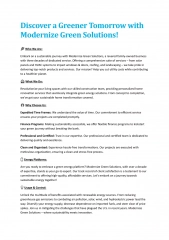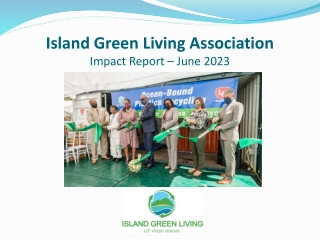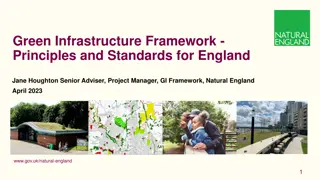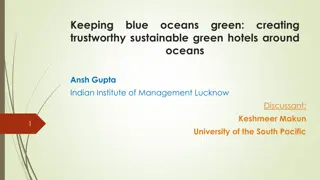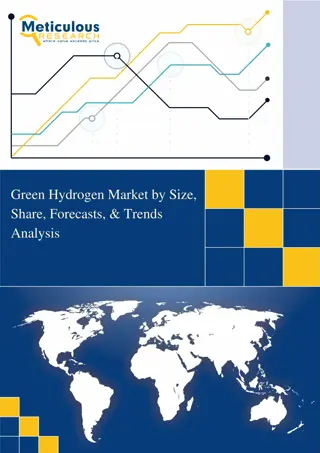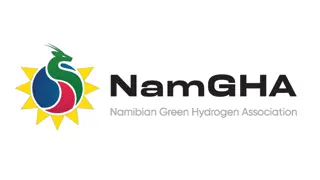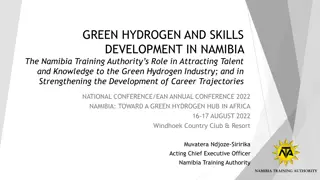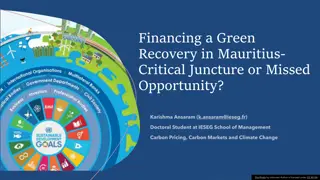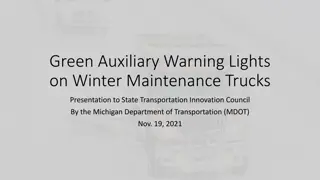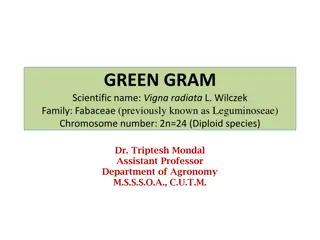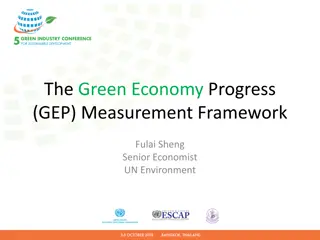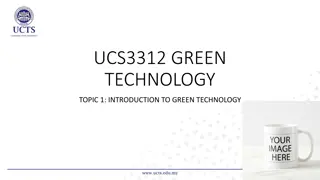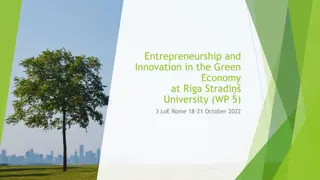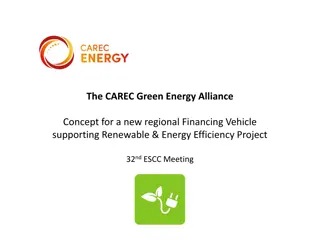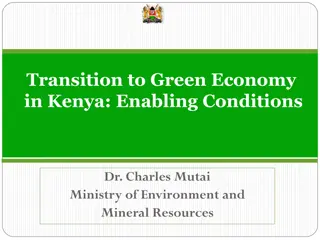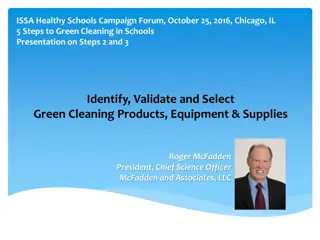
Living Green: Sustainable Development and Environmental Solutions
Explore the concept of living green and its benefits, including sustainable practices in agriculture, energy, construction, travel, and consumption. Learn about the goals of living green, components, and the importance of sustainable development for a better future.
Download Presentation

Please find below an Image/Link to download the presentation.
The content on the website is provided AS IS for your information and personal use only. It may not be sold, licensed, or shared on other websites without obtaining consent from the author. If you encounter any issues during the download, it is possible that the publisher has removed the file from their server.
You are allowed to download the files provided on this website for personal or commercial use, subject to the condition that they are used lawfully. All files are the property of their respective owners.
The content on the website is provided AS IS for your information and personal use only. It may not be sold, licensed, or shared on other websites without obtaining consent from the author.
E N D
Presentation Transcript
Outline Outline Environmental Problems Causes of Environmental Problems Living green Sustainable Development Components of Living Green Implementing Living green in our lives Benefits of Living green
Environmental Problems. Global Warming. Environmental Degradation. Ozone layer Depletion. Pollution. Overcrowding.
Causes of environmental problems Climate change. Deforestation. Desertification. Increased natural disasters. Loss of biodiversity. Exploitation/Degradation of Natural Resources. Unequal distribution of resources. Urbanization. Changes in Technology/Industrialization. Cultural Changes. Modern Agriculture.
LIVING GREEN Living green is a lifestyle which seeks to bring into balance the conservation and preservation of the earth s natural resources, habitats and biodiversity with human cultures and communities. Living green, which means sustainable lifestyle, can ensure preventing the earth from being threatened and better life for our next generations. Green lifestyle involves making sustainable choices about what we eat, how we travel, what we buy, and how we use and dispose it.
GOALS OF LIVING GREEN Resource Efficiency Energy Water Food Biodiversity Reduction of Waste. Pollution. Environmental Degradation. Health improvement Protection from diseases Better physical and Mental Health.
SUSTAINABLE DEVELOPMENT Adopting sustainable development is the key to Livng Green! Sustainable development has three dimensions: Sustainable development is development that meets the need of the present without compromising the ability of the future generations to meet their own needs. ECONOMIC SOCIAL ENVIRONMEN TAL
COMPONENETS OF LIVING GREEN Sustainable Agriculture Green Energy Green Construction Green Travel Green Consumption These components help ensure social and economic development while conserving the environment and natural resources.
SUSTAINABLE AGICULTURE. It is the production of food, fiber or other plant or animal products using farming techniques that protect the environment, public health, human communities and animal welfare. Organic farming. Poly culture/crop rotation. Soil enrichment. Nutrient Management. Natural Pest predators. Non-chemical/ Bio-intensive integrated pest management.
GREEN ENERGY We need to move from the dependence of fossil fuels towards the sustainable energy sources like: Solar power Wind Power Hydro Power Geothermal Power Tidal Power Power from Biomass Biofuels.
Green construction Green Building: LED- optimizing the use of natural light, Water conservation- water management and rain water harvesting, otimizing natural heat-solar panels, materials-use low impact products, waste- reduce, re-use, recycle, Biodiversity- reducing impact on biodiversity, sanitation- eco friendly sanitation. Green Sanitation: Clean drinking water, waste water disposal, Clean toilet, human and animal waste disposal, House and food hygiene, personal hygiene, Cleanliness of the surrounding.
A green building: Operates energy efficiently. Conserves water. Is comfortable, safe and healthy. Is durable and maintainable with minimal environmental impact.
Green consumption Green Consumption is the regular practice of consuming products that do not harm human health and do not affect the environment adversely. How to implement green consumption in our lives: Purchase food from the local market. Avoid excessive package Reduce the use of plastic bags Look for products with green label.
Implementing living green in our lives 3R S: Reduce, Reuse and Recycle. Save Energy. Save Water. Eat Green. Plant Green.
BENEFITS OF LIVING GREEN Reduces Pollution. Reduces Carbon Print. Increases availability of fresh water. Saves energy decreases the demand for fossil fuels. Gives Healthier lives.
Remember! Earth provides enough to satisfy every man s need but not every man s greed.- Mahatma Gandhi. Green club Lets go green

